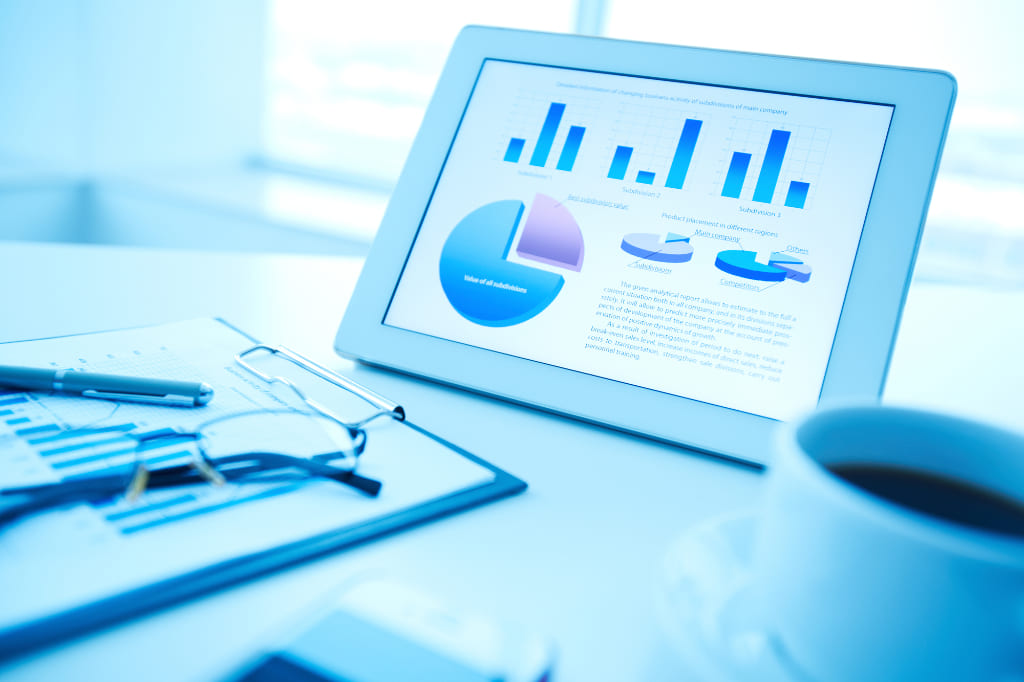Software

Accounting and Tax Software: An Essential Tool for Businesses
The most common way for a business to function is through the use of accounting software. This sort of program enables small businesses owners to keep track of their expenses, incomes, purchases, and sales without having to do anything manually or hire someone to do it for them. Accounting software programs offer many benefits such as easy record-keeping, budgeting capabilities, and financial reports all at one’s fingertips; this is especially helpful in today’s time where quick decisions have become necessary due to high competition among businesses.
Such programs are designed so that you can easily upload bank statements, transactions, invoices, etc., saving an immense amount of time that would have otherwise been spent on cutting checks, filing taxes, and doing other tedious tasks. It also saves a lot of money in the long run due to its ease in record keeping and generating reports.
Take the guesswork out of your financials.
Your Time and Money Saving Solution
The accounting software landscape has never been more diverse. From SaaS to cloud computing, there are plenty of options for businesses looking to streamline their process and stay up with the most innovative technology in this space. The best part about it is that the tax implications for most of these solutions are still relatively unknown.
With a little bit of research and due diligence, you can easily find a solution that fits your specific business model. And if you’re looking for something more from your accounting software, there’s always the option to go with Software as a Service or SaaS. In this scenario, you’ll enjoy complete cloud-based accounting tools without any installation requirements whatsoever. The best part about it is that you won’t have to worry about anything as everything will be taken care of by the online service provider, ensuring timely updates and upgrades at all times.

Choosing the Right Accounting Software is Critical to the Health of Your Business
Choosing accounting software may seem like an easy task, but it isn’t! With so many options available, it is easy to make an uninformed decision. It would help if you took the time to do your research and select something with ease of use in mind; most people don’t want to spend valuable resources learning how to use new software. An excellent place to look for what might work best for your business would be on the Internet. Plenty of websites review various accounting software programs based on different criteria such as the number of transactions, custom fields, reporting features, etc.
Businesses today have unparalleled access to more technologies than ever before. Technology has enabled anyone who wants one to run an office from home or set up shop in the middle of nowhere; this has led to an influx in businesses sprouting overnight.
As easy as it may seem to be, starting a business is hard work. You have to deal with endless amounts of paperwork that can sometimes take up all your time and energy, leaving no room for actual work. Keeping track of where you stand financially at all times is essential when it comes to running a successful business. What’s more important than keeping yourself afloat in this cutthroat market is acting upon real-time information, which helps you remain ahead in this game. The only way you can do so is if you are aware in real-time of what is happening with your daily transactions and cash flows in hand at all times. An effective software program will make this process seamless and worry-free.
Reliable Accounting Software
Freshbooks
Freshbooks is a popular option for small businesses as it’s easy to use and makes bookkeeping simple with features like saved time billing and pretty charts and reports. This is best used by US citizens or people who don’t mind paying self-employment tax on their net income at the end of the year because they cannot file T2125s online through the program. Freshbooks has an e file option for any company that uses US addresses, which includes LLCs or corporations; however, when creating one’s account, Freshbooks automatically generates an individual name on the account (FreshBooks) rather than developing a legal term like “Inc” or “LLC” making it difficult to explain what type of entity each person is during tax time. The other downside to this software is that it doesn’t have an EI number registration process built into the system like the others mentioned above, which means you cannot file T2125s online with CRA at the end of each fiscal year.
Quickbooks Online
Sage One
This is one of the more popular options for small business owners looking to simplify their bookkeeping, but it does charge transaction fees like Quickbooks Online if you have multiple transactions in a year.
Wave Accounting
Xero
SaaS Software vs. Traditional Accounting Software
SaaS (Software As A Service):
SaaS was created to make bookkeeping seamless and straightforward by allowing a company or individual to pay per month or yearly for the software depending on how many transactions they have in a year. This usually means that one flat monthly fee will be charged to the credit card you list during registration, which is simple and makes budgeting easier if you’re billing yourself for services (services you provide to your clients).
Traditional Accounting Software:
This method involves downloading and installing a program onto your computer, making it challenging to use if you’re not near your desktop. This also means that you have to backup files yourself because many companies will not do this for you or charge fees. Traditional accounting software often requires learning how to work with different spheres of money management such as payroll, invoicing, product costs, etc., which can be confusing if you only want to track expenses and income. Traditional accounting software typically charges fees for payroll if you’re using it for your employees, but not always; some companies don’t charge payroll fees (QuickBooks, for instance).
What is the Difference?
Which Option is Best for Your Business?
The correct answer to this question depends on what you’re looking for in your business accounting software. Suppose you’re looking for something easy to use. In that case, it offers multi-currency support, allows you to do bookkeeping without paying transaction fees depending on how many transactions there are in a year, and offers online filing (T2125s) like Sage One or Freshbooks. Saas Accounting Software like Wave Accounting and Xero would be best suited for your needs. Wave & Xero both have other great features that small businesses benefit from, such as invoicing built into their systems, making working with clients more straightforward than traditional software because all of your data is in one place rather than manually updating multiple spreadsheets. However, if you’re looking for transactional accounting rather than bookkeeping (invoicing, payroll, etc.), then traditional software like Sage 50 & QuickBooks is a great option.
In the end, the most important thing to consider when choosing accounting software is what you’re willing to spend on it as well as how much time you have to learn about bookkeeping. If your business isn’t ready for a SaaS solution yet, but you want something simple and easy to work with, then traditional software is a great way to go.